Having ants in plant pots can be a sign of unusual activities that don’t always bode well. For instance, they can easily multiply and take over your pot if you’re not careful.
But how does one get rid of them? We’ve listed 15 effective methods ranging from the most simple and organic to the more potent kind.
Why are ants attracted to potted plants?
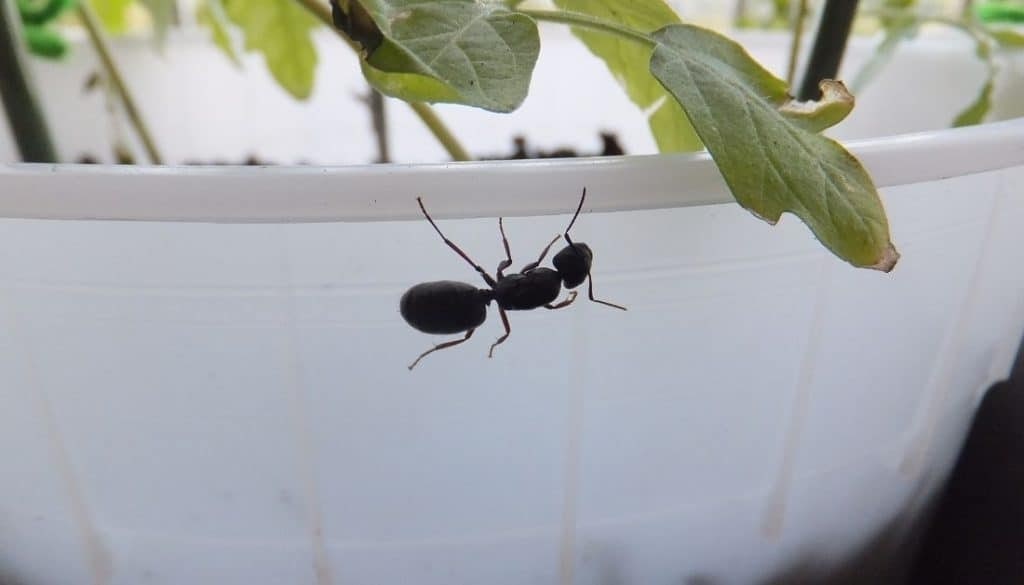
Image by How To Murder Pests
Ants are attracted to potted plants due to various reasons. They may find fallen crumbs, sugary residues, or small insects around the plant, becoming opportunistic feeders.
Some ant species even “farm” aphids on plants, protecting them from predators in exchange for honeydew. Potted plants, especially if overwatered, create a moist environment that ants favor for survival.
Loose, mulchy soil in pots also provides suitable nesting sites for certain ant species. Also, ants use pheromone trails to communicate and navigate, leaving trails if they find food or a nesting site nearby, attracting more ants to the area.
How to Get Rid of Ants from Planters and Potted Plants
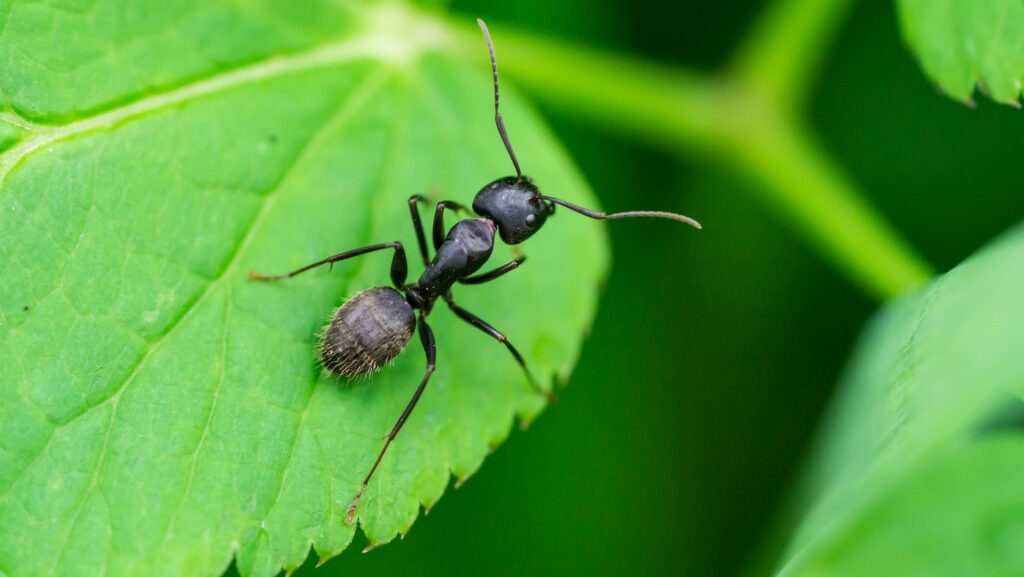
Each of the listed methods below has its merits, and their effectiveness may vary based on the specific ant species, the severity of the infestation, and the types of plants involved. Let’s check which ones work best for you.
Cinnamon
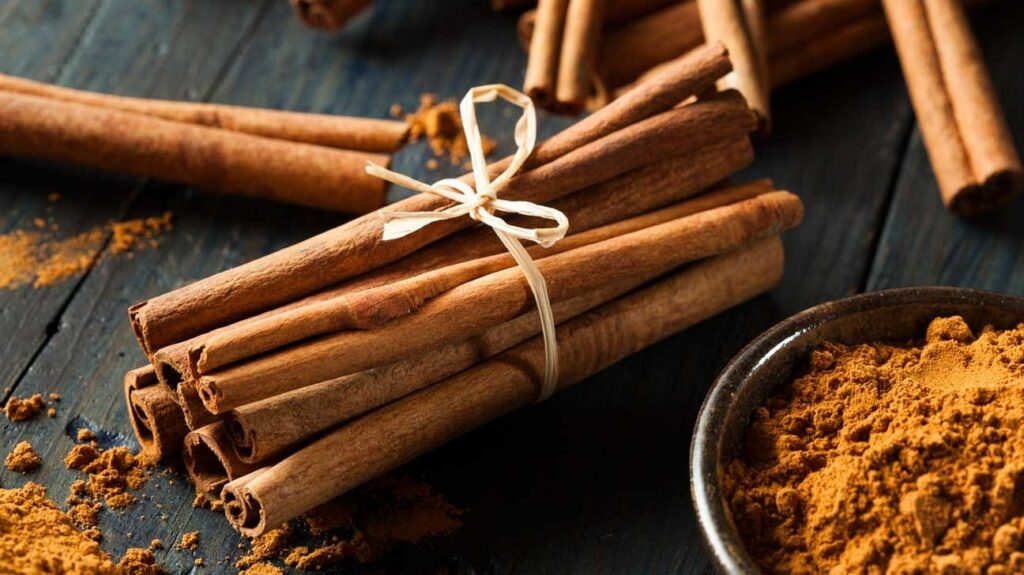
| Factor | Information |
| Ease of Activity | Easy ●○○○○ |
| Speed | Moderate |
| Estimated Costs | Low (common household item) |
| Possible Risks | None (safe for plants and environment) |
Cinnamon disrupts their scent trails, preventing them from reaching the plants. Ants rely on pheromone trails to navigate, and cinnamon’s strong aroma confuses and repels them.
Diatomaceous Earth
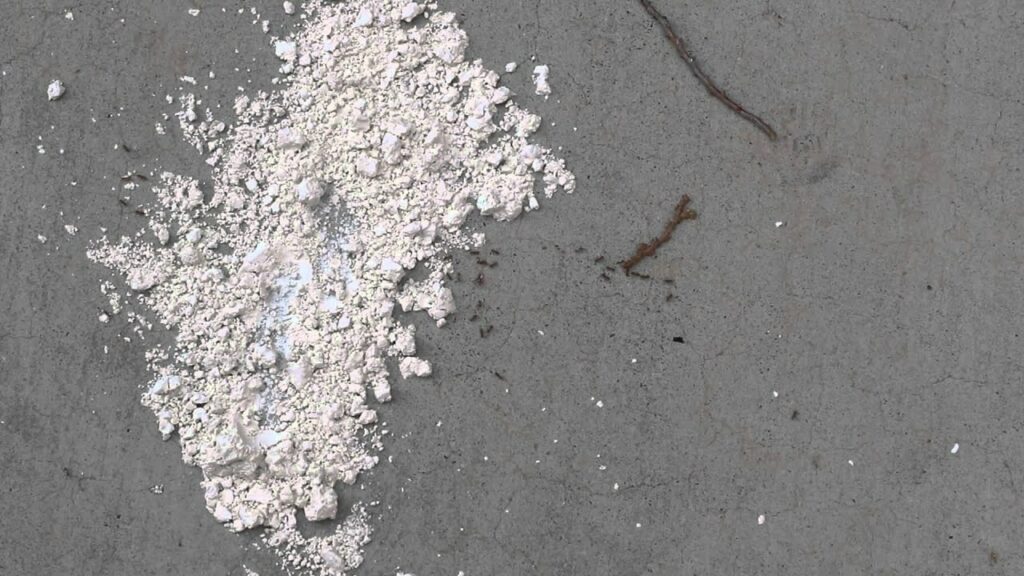
| Factor | Information |
| Ease of Activity | Easy ●○○○○ |
| Speed | Moderate to Fast |
| Estimated Costs | Low to Moderate |
| Possible Risks | Low (safe for humans, pets, and plants) |
Diatomaceous Earth is a fine powder composed of fossilized algae. Sprinkling it around plant pots creates a barrier that damages ants’ exoskeletons, leading to dehydration and death.
Vinegar Solution

| Factor | Information |
| Ease of Activity | Easy ●○○○○ |
| Speed | Moderate |
| Estimated Costs | Low (common household item) |
| Possible Risks | Low (safe for plants and environment) |
A vinegar solution disrupts ant trails and eliminates their pheromone scent. Mix equal parts vinegar and water, then spray it around the plant pots to mess with the ants’ ability to communicate and navigate.
Borax and Sugar Bait
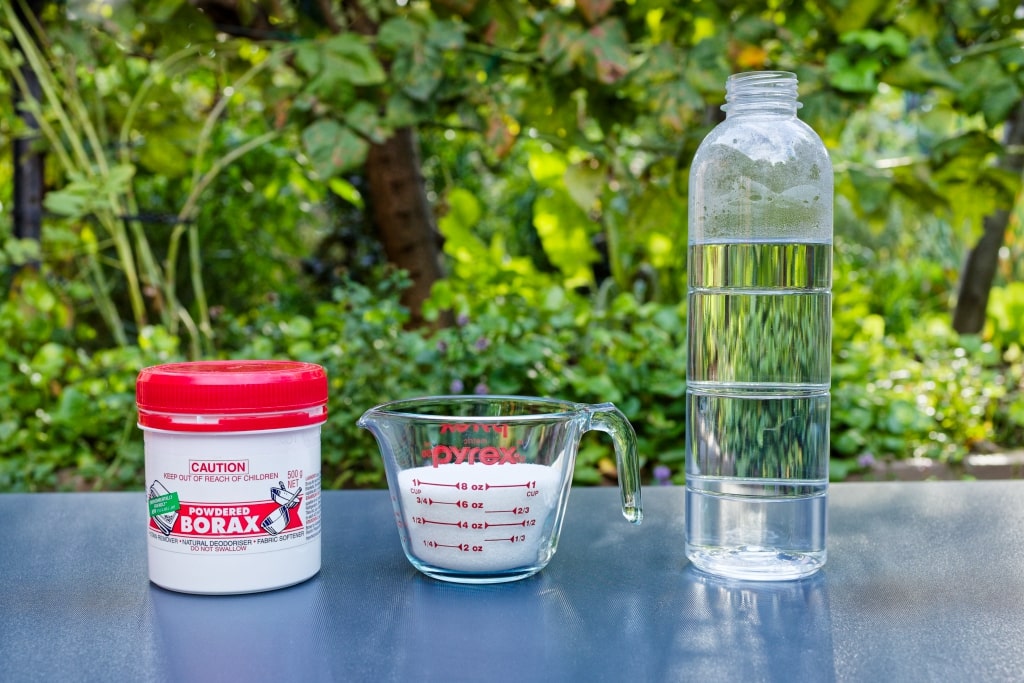
| Factor | Information |
| Ease of Activity | Moderate ●●○○○ |
| Speed | Slow to Moderate |
| Estimated Costs | Low (common household items) |
| Possible Risks | Moderate (toxic, use caution and keep away from children and pets) |
Create a bait using a mixture of borax and sugar. Ants are attracted to the sweet sugar but are killed by the toxic borax by worker ants that carry the mixture back to the colony’s nest.
Mint Leaves
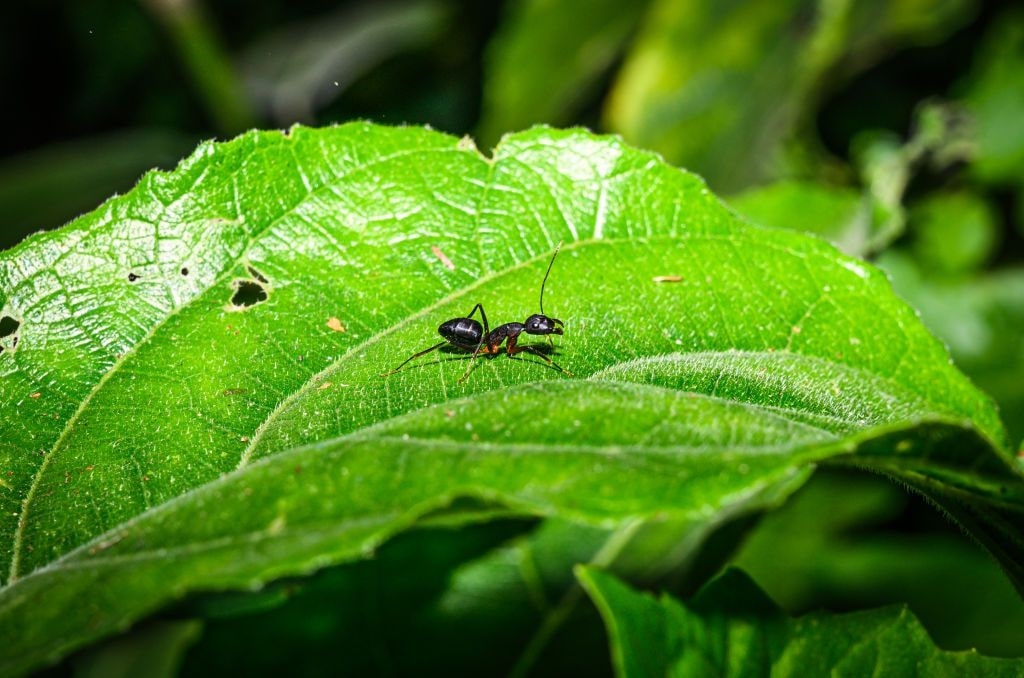
| Factor | Information |
| Ease of Activity | Easy ●○○○○ |
| Speed | Slow to Moderate |
| Estimated Costs | Low (if planting, otherwise moderate for sachets) |
| Possible Risks | Low (safe for plants and environment) |
Mint leaves act as a natural ant repellent due to their strong scent. Planting mint around the affected pots, placing mint sachets, or cutting mint leaves around the pot or soil creates a barrier that ants won’t cross.
Soap and Water
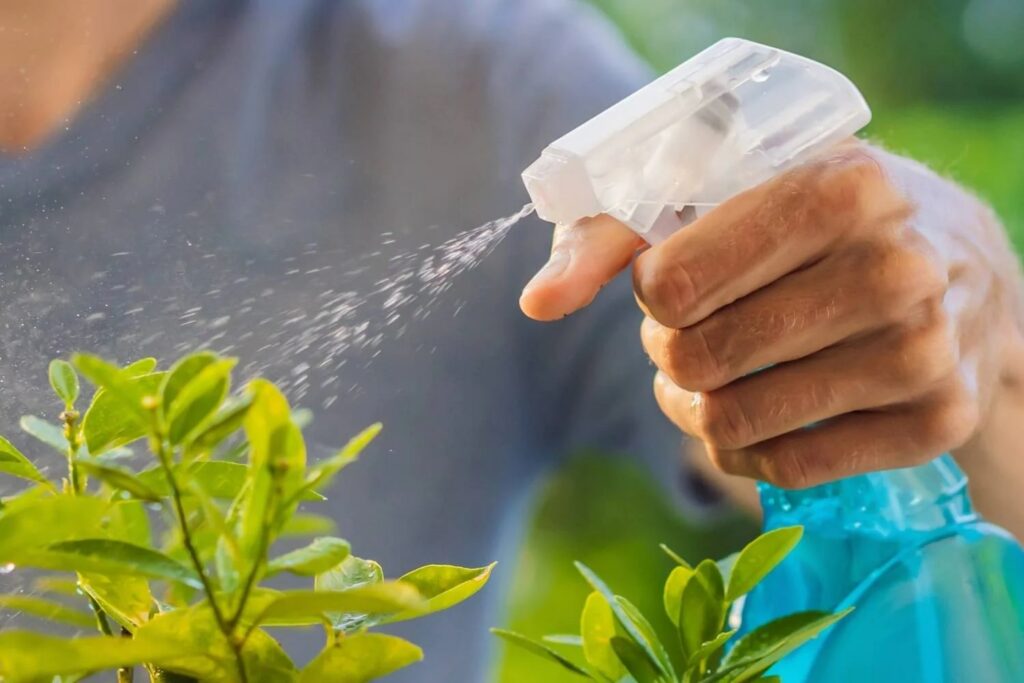
| Factor | Information |
| Ease of Activity | Easy ●○○○○ |
| Speed | Moderate |
| Estimated Costs | Low (common household items) |
| Possible Risks | Low (safe for plants and environment) |
A soapy water solution disrupts ant trails, suffocates them, and breaks down their exoskeleton. Mix a few drops of dish soap with water and spray it on the ants or the pot’s surroundings.
Bay Leaves
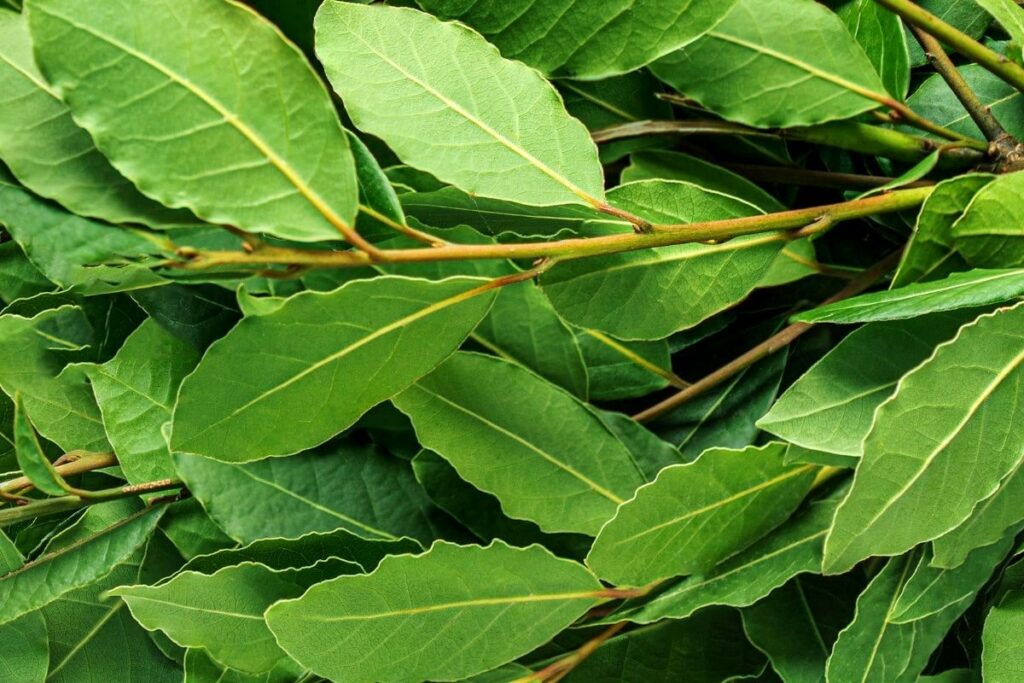
| Factor | Information |
| Ease of Activity | Easy ●○○○○ |
| Speed | Slow to Moderate |
| Estimated Costs | Low (common kitchen item) |
| Possible Risks | Low (safe for plants and environment) |
Bay leaves release a scent that repels ants. Scatter dried bay leaves around the plant pots or crush them slightly to enhance their aroma without harming the plants.
Citrus Peels
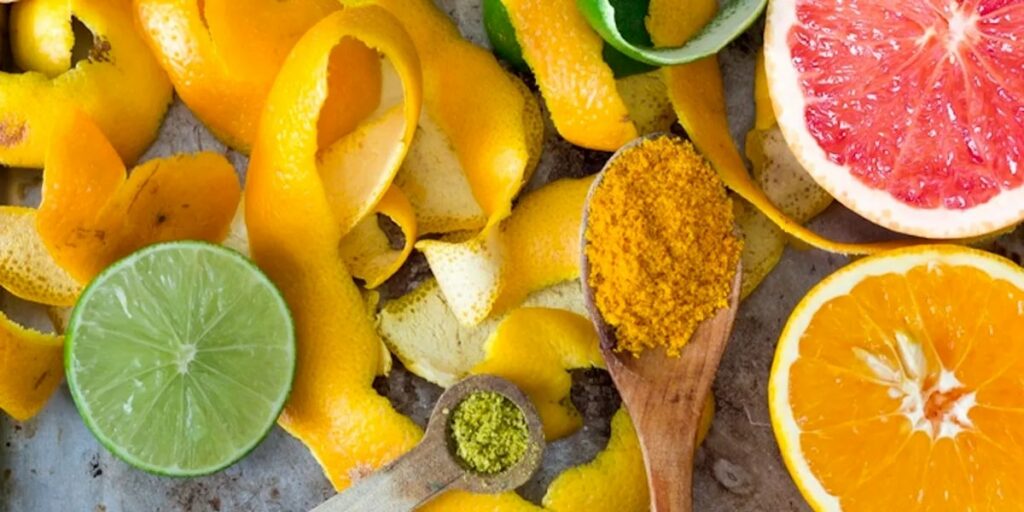
| Factor | Information |
| Ease of Activity | Easy ●○○○○ |
| Speed | Slow to Moderate |
| Estimated Costs | Low (common kitchen item) |
| Possible Risks | Low (safe for plants and environment) |
Citrus peels, such as orange or lemon, contain natural oils that ants dislike. Place citrus peels around the plant pots or grind them into a repellent paste.
Coffee Grounds
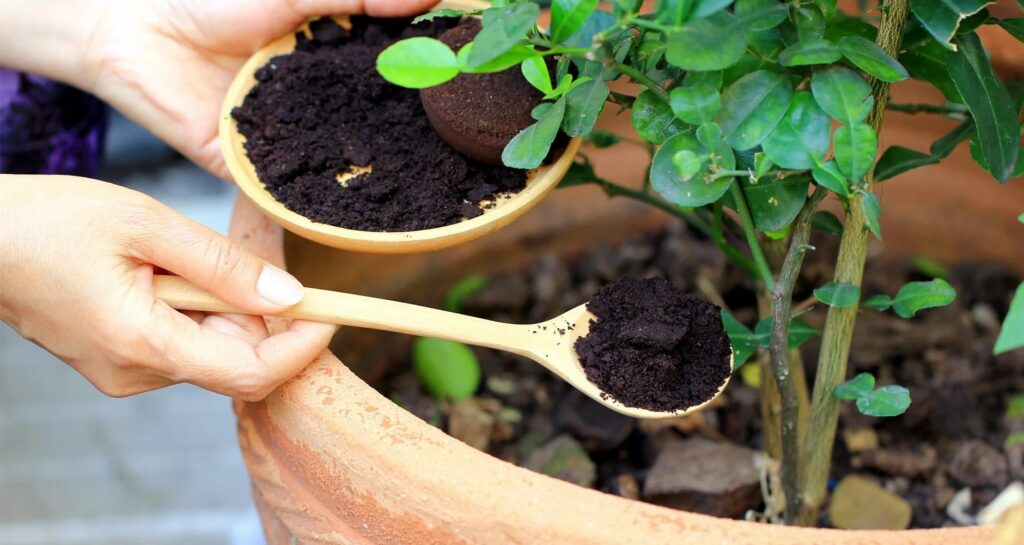
| Factor | Information |
| Ease of Activity | Easy ●○○○○ |
| Speed | Slow to Moderate |
| Estimated Costs | Low (common kitchen item) |
| Possible Risks | Low (safe for plants and environment) |
Used coffee grounds act as a barrier that ants avoid. Sprinkle the grounds around the plant pots or mix them with soil to disrupt ant trails and discourage them from nesting.
Chalk
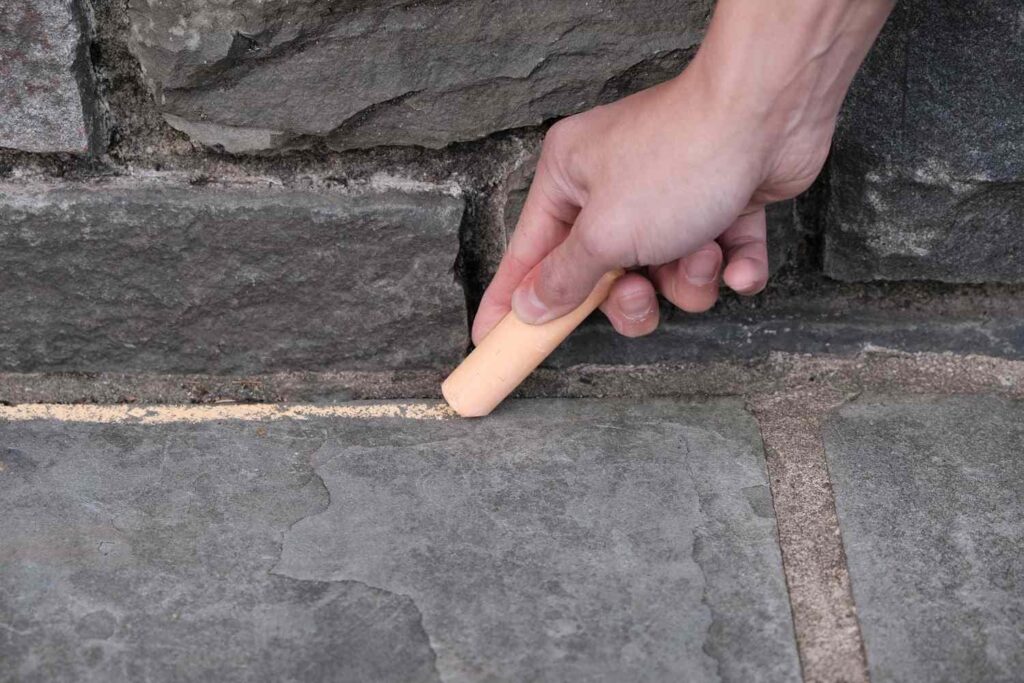
| Factor | Information |
| Ease of Activity | Easy ●○○○○ |
| Speed | Slow to Moderate |
| Estimated Costs | Low (common household item) |
| Possible Risks | Low (safe for plants and environment) |
Chalk contains calcium carbonate, which ants avoid. Draw a line around the plant pots with chalk or create a chalk barrier that’s effective and non-toxic.
Insecticide
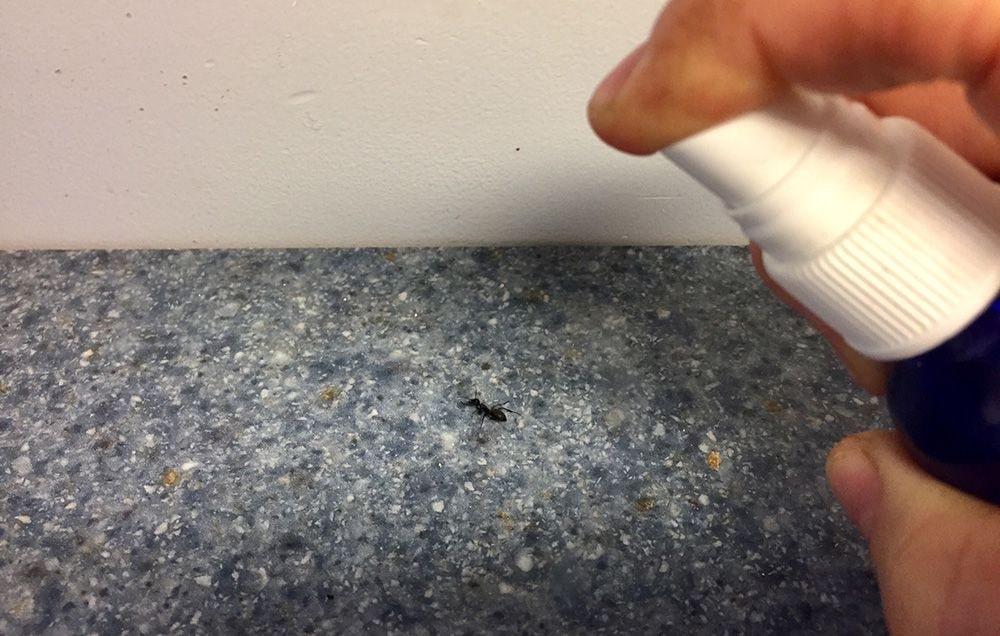
| Factor | Information |
| Ease of Activity | Moderate ●●○○○ |
| Speed | Fast |
| Estimated Costs | Moderate to High |
| Possible Risks | High (potential harm to plants and environment, use with caution) |
Insecticides can be effective in eliminating ants in plant pots, but you need to use them properly. Too many chemical insecticides harm the plants and the surrounding environment.
Choose a targeted ant insecticide, follow the recommended dosage, and apply it carefully.
Essential Oils
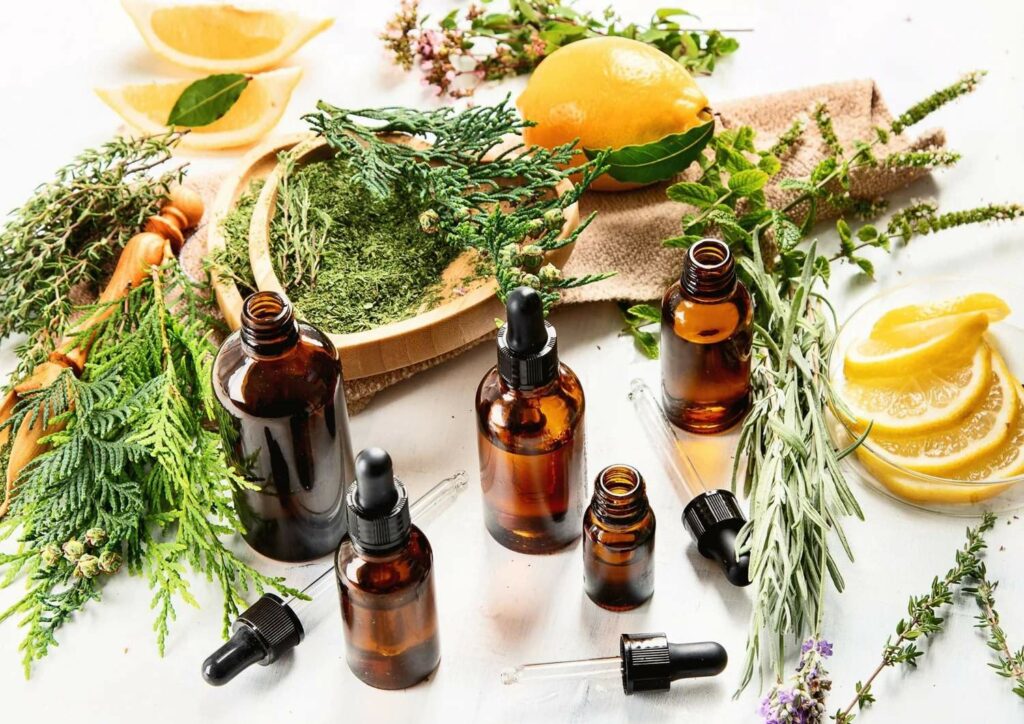
| Factor | Information |
| Ease of Activity | Easy ●○○○○ |
| Speed | Slow to Moderate |
| Estimated Costs | Moderate to High |
| Possible Risks | Low (if used in moderation, otherwise potential skin irritation) |
Essential oils like peppermint, tea tree, cinnamon, or citrus oils can serve as natural ant repellents. Dilute a few drops of your preferred essential oil in water and spray it around the plant pots.
Soaked Soil
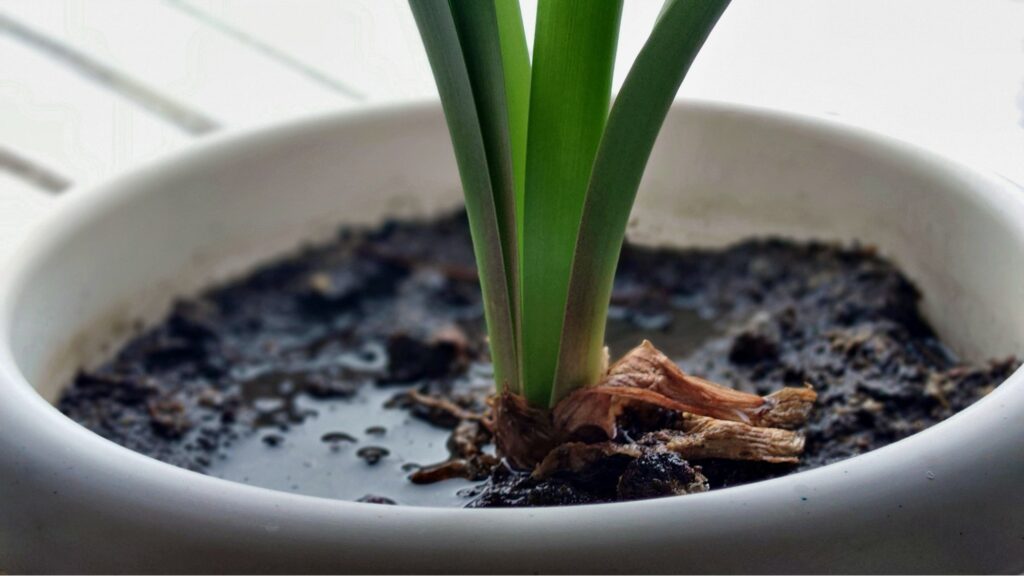
| Factor | Information |
| Ease of Activity | Easy ●○○○○ |
| Speed | Slow to Moderate |
| Estimated Costs | Low (minimal water usage) |
| Possible Risks | Low (avoid overwatering to prevent plant root damage) |
Soaking the soil in the plant pots can help drown ant colonies and their nests. However, it’s essential to avoid overwatering, as this can negatively affect the plant roots.
Allow the soil to dry slightly between watering sessions. Doing this will help strike a balance between soil moisture and ant population control without compromising the plant’s health.
Commercial Ant Bait
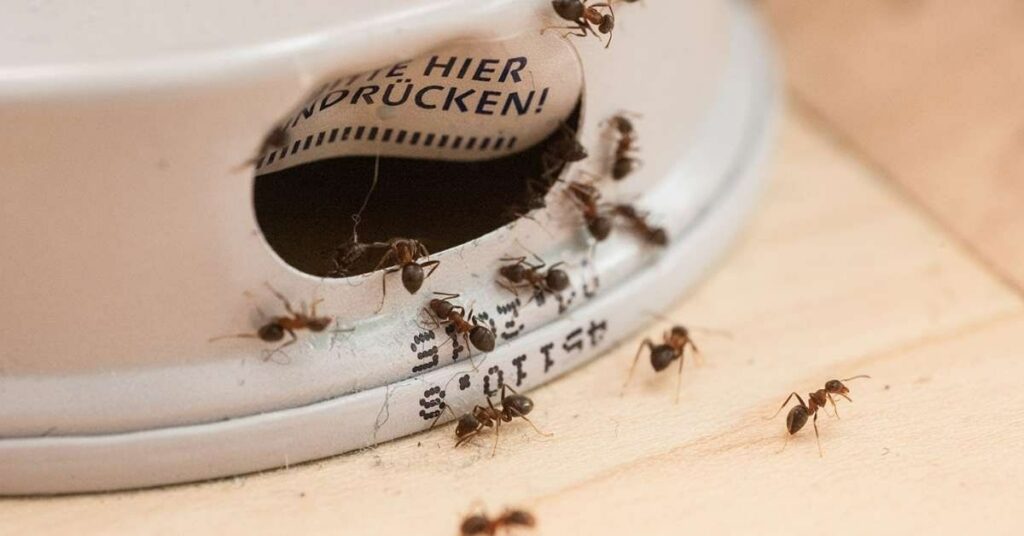
| Factor | Information |
| Ease of Activity | Easy ●○○○○ |
| Speed | Moderate to Fast |
| Estimated Costs | Moderate to High |
| Possible Risks | Moderate (toxic, follow instructions carefully to avoid harm) |
Commercial ant baits are designed to attract ants and deliver a toxic substance to the colony. Place the bait near ant entry points or directly on their trails.
Similar to borax and sugar baits, the ants will carry the poisoned bait back to the nest, effectively eradicating the entire colony. Choose a bait that is specifically formulated for the type of ants infesting your plant pots.
Soil Replacement
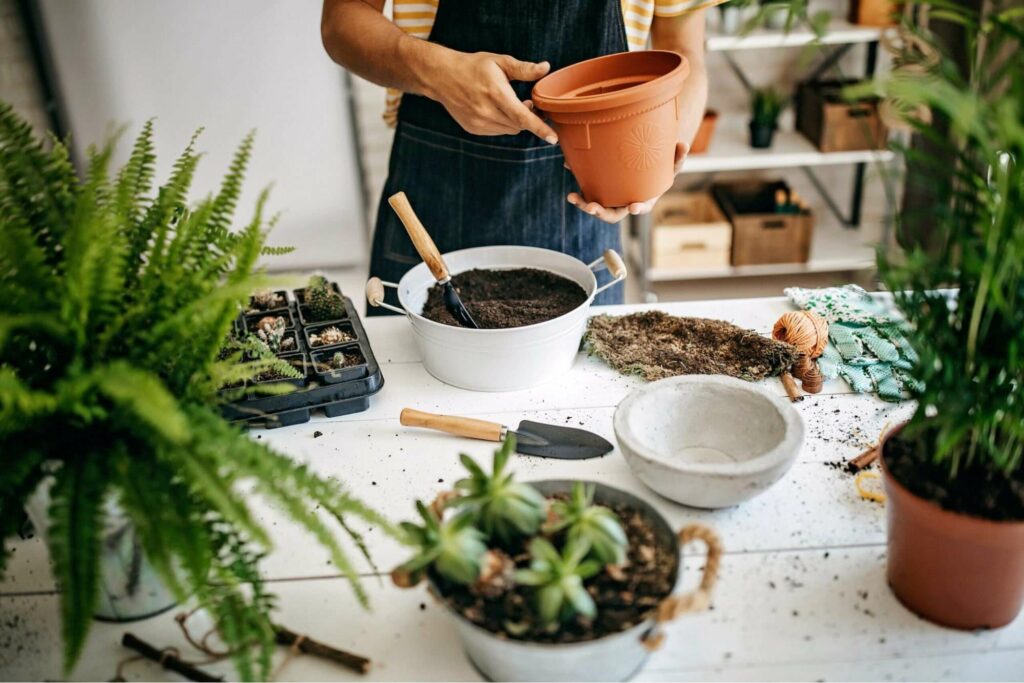
| Factor | Information |
| Ease of Activity | Moderate ●●○○○ |
| Speed | Slow to Moderate |
| Estimated Costs | Moderate to High |
| Possible Risks | Low to Moderate (depends on the plant’s sensitivity to soil changes) |
If ant infestation is persistent, replace the soil in the plant pots. This removes any ant nests as well as any pheromone trails they may have established.
Keep the new soil well-draining and suitable for your plants for a fresh start and reduce the likelihood of ant reinfestation.
The Link Between Ants, Pests, And Disease
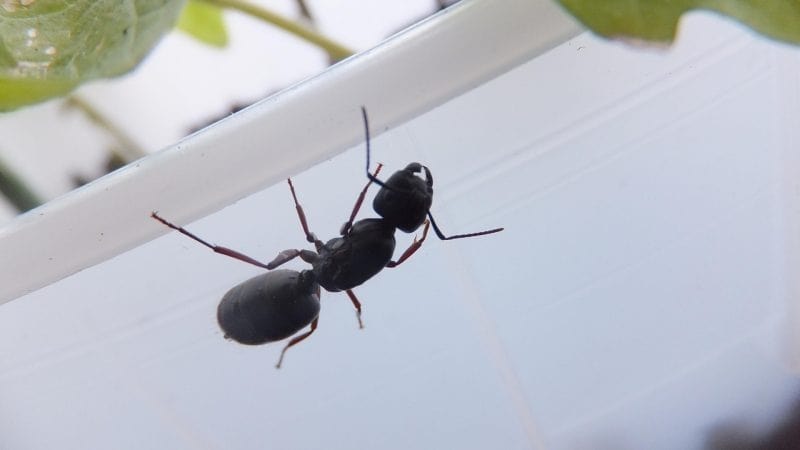
Ants have a complex role in ecosystems, affecting potted plants. Some ants protect pests like aphids, leading to more aphids that harm plants by feeding on plant sap.
Ants also unintentionally spread pests and diseases. Ants do this by carrying pests and diseases from plant to plant, easily causing spread and infestation.
Ants disrupt the ecosystem balance by discouraging natural pest predators. This results in increasing pest populations that harm plants.
While ants don’t directly harm plants, their actions, like protecting aphids, can indirectly affect plant health by increasing sap loss and causing stress.
Ants usually don’t eat plant roots. However, their nest-building can disturb soil around roots, affecting plant stability and nutrient absorption.
How to protect indoor house plants from ants?
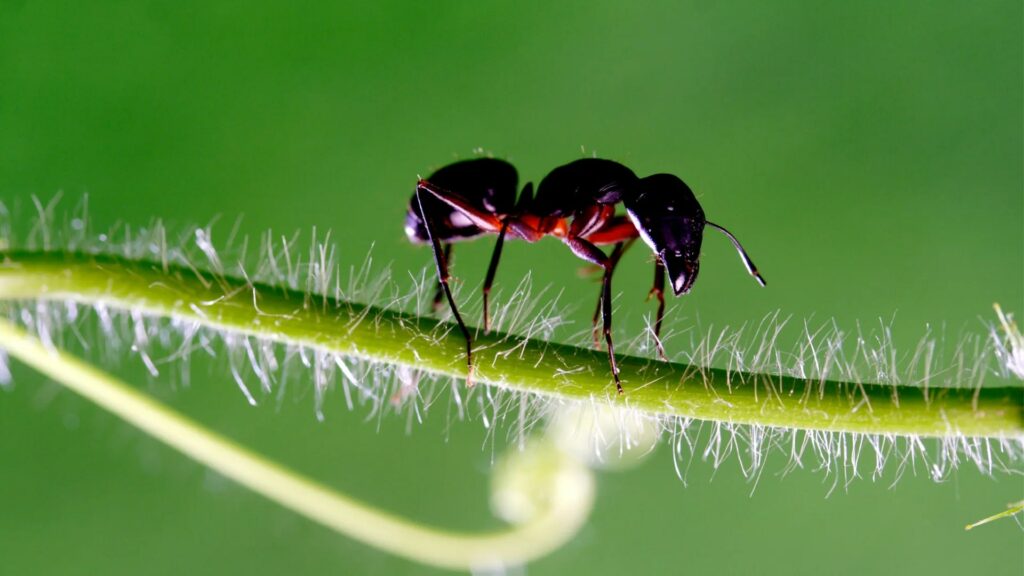
There are various ways to protect your indoor house plants from ants. We’ve made the list complete with factors to help you decide better.
Natural Repellents
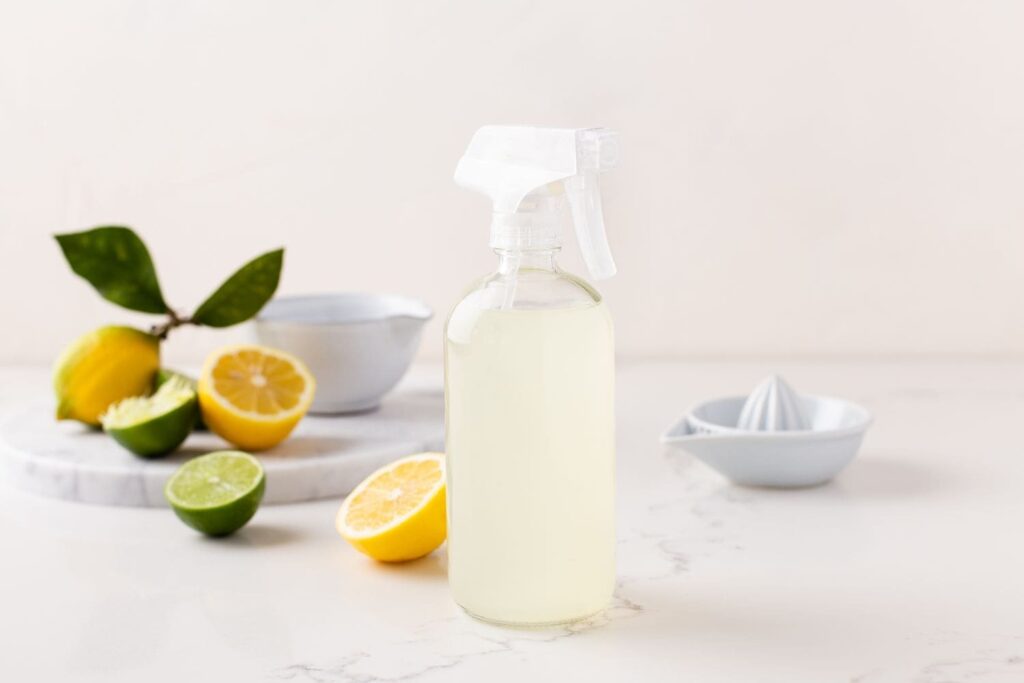
| Factor | Information |
| Effectivity | Moderate to High ●●●●○ |
| Speed | Slow to Moderate |
| Estimated Costs | Low to Moderate |
| Possible Risks | Low (safe for plants and environment) |
Use natural ant repellents such as cinnamon, mint, or citrus peels. These scents disrupt ant trails and make the area around your plants less appealing.
Seal Entry Points
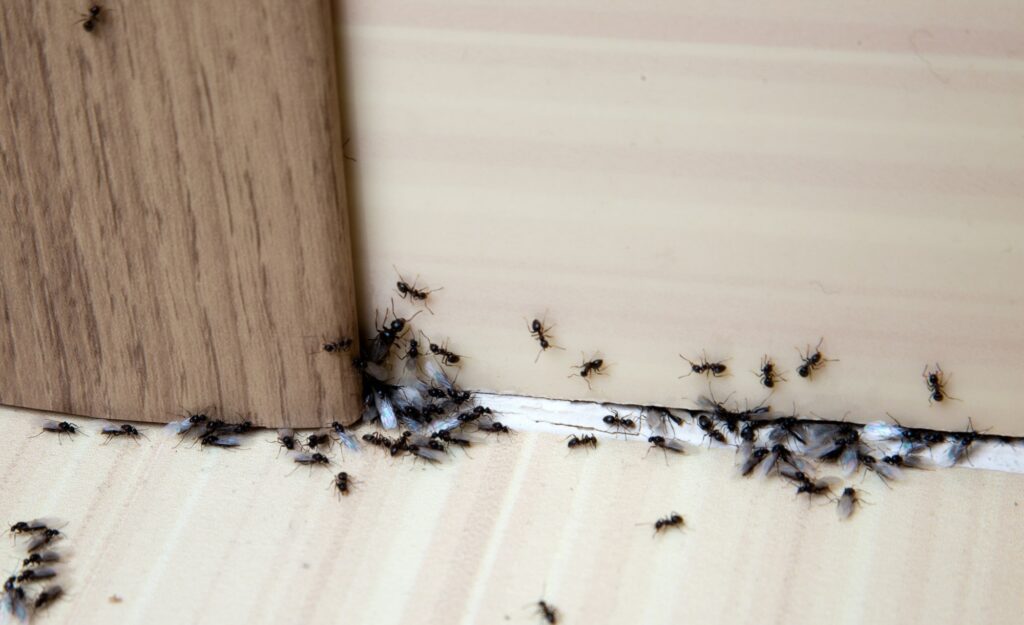
| Factor | Information |
| Effectivity | High ●●●●○ |
| Speed | Moderate |
| Estimated Costs | Low to Moderate |
| Possible Risks | Low (depends on the effectiveness of sealing) |
Identify and seal any entry points that ants might use to access your indoor plants. Check windows, doors, and any small openings in walls to prevent ant entry.
Keep the Area Clean
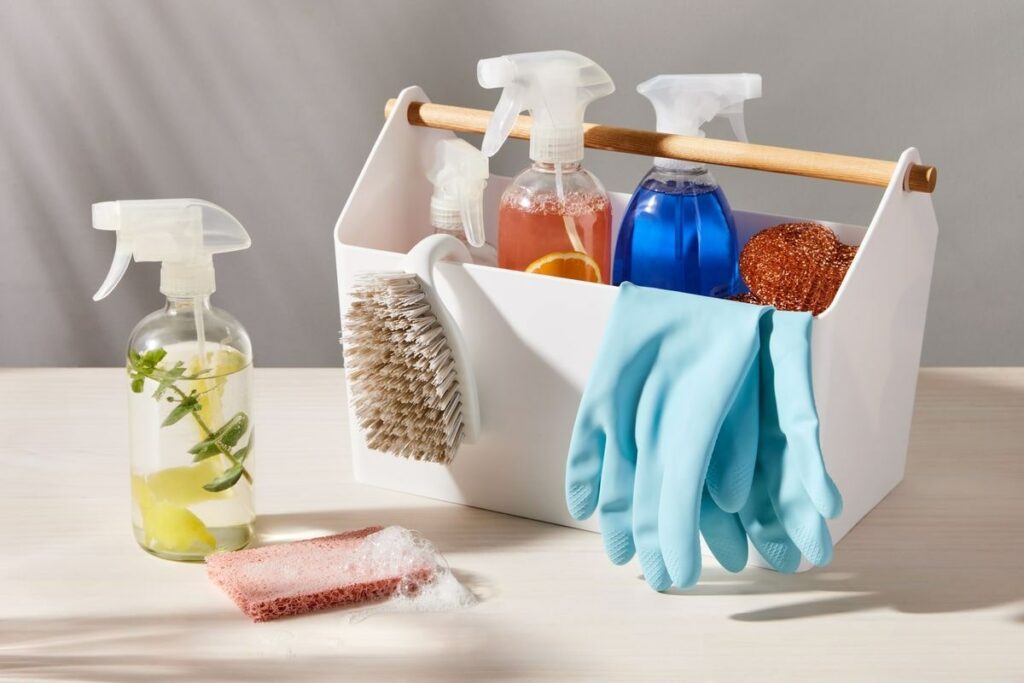
| Factor | Information |
| Effectivity | High ●●●●○ |
| Speed | Slow to Moderate |
| Estimated Costs | Low to Moderate |
| Possible Risks | Low (depends on consistency in maintaining cleanliness) |
Regularly clean up crumbs, spills, or food residues around your indoor plants. Ants are attracted to food sources, and maintaining a clean environment helps deter them.
Remove Aphids or Scale Insects

| Factor | Information |
| Effectivity | High ●●●●○ |
| Speed | Moderate to Fast |
| Estimated Costs | Low to Moderate |
| Possible Risks | Low (using safe and targeted methods) |
Since ants often “farm” aphids for honeydew, addressing the presence of these pests can discourage ants. Use natural methods or insecticidal soap to control aphids or scale insects on your plants.
Use Diatomaceous Earth
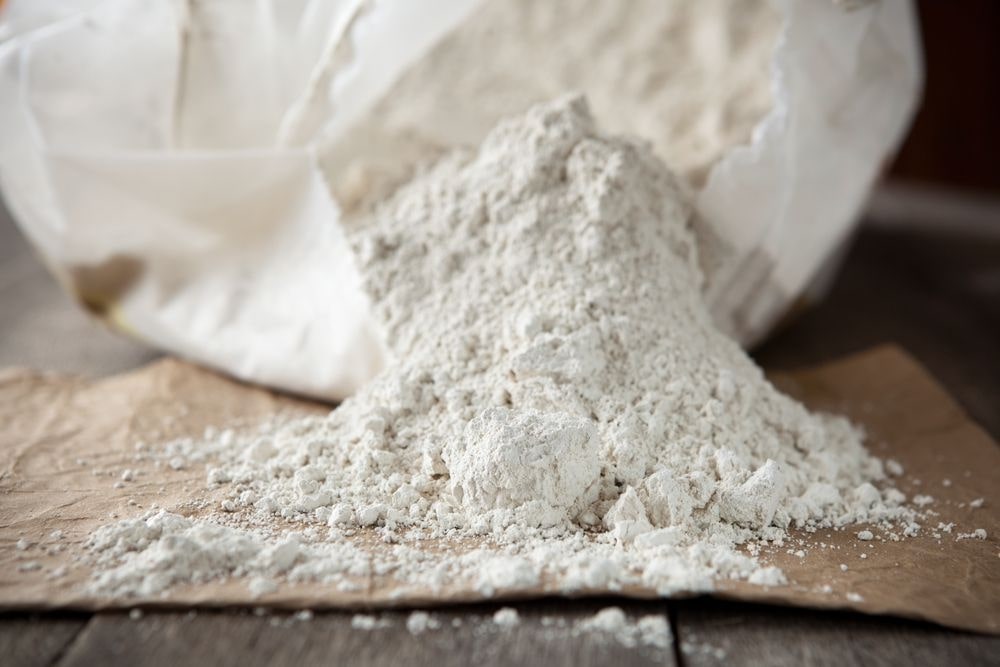
| Factor | Information |
| Effectivity | Moderate to High ●●●●○ |
| Speed | Slow to Moderate |
| Estimated Costs | Low to Moderate |
| Possible Risks | Low (safe for humans, pets, and plants) |
Sprinkle food-grade diatomaceous earth around the base of your plants. This fine powder is safe for plants but can be detrimental to ants, acting as a physical barrier.
Put Ant Bait Stations
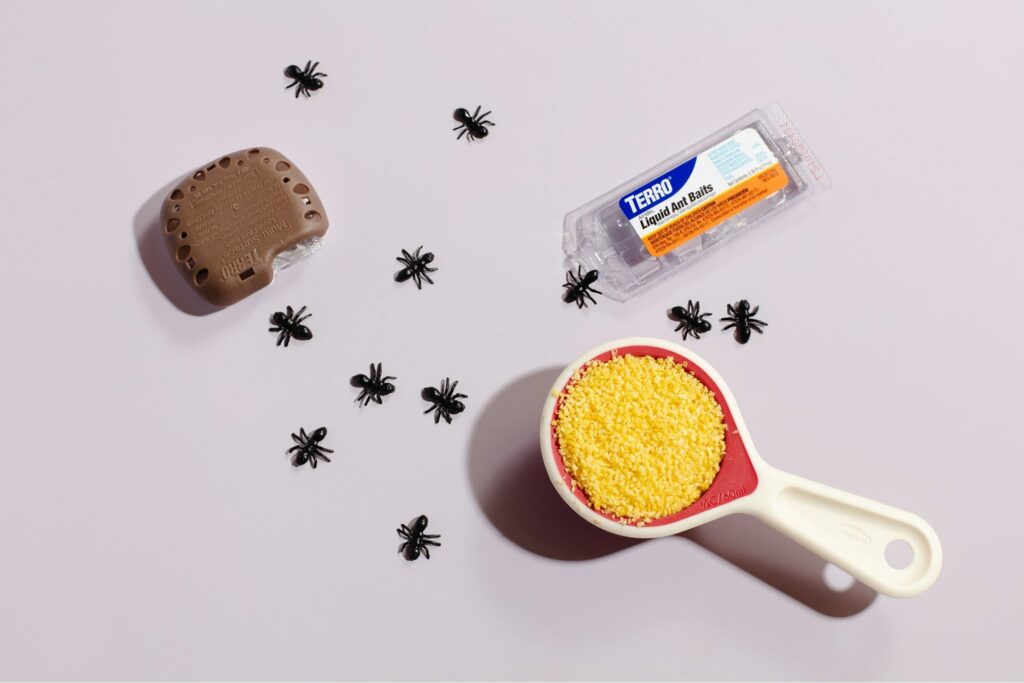
| Factor | Information |
| Effectivity | High ●●●●○ |
| Speed | Moderate to Fast |
| Estimated Costs | Low to Moderate |
| Possible Risks | Moderate (use caution and follow instructions) |
Place ant bait stations near your indoor plants. These stations contain bait that ants carry back to their nests, effectively eliminating the colony. Choose baits that are safe for indoor use.
Place Sticky Barriers
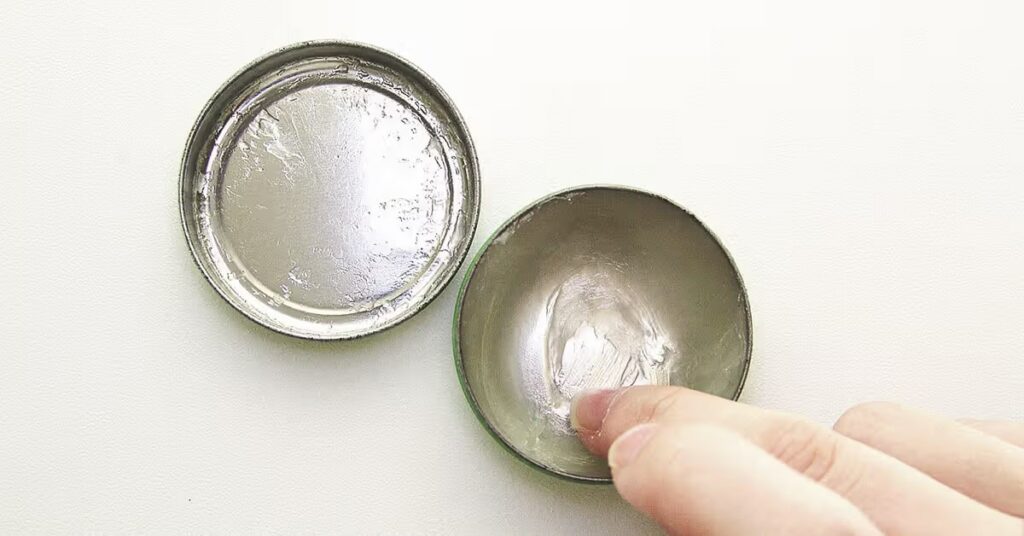
| Factor | Information |
| Effectivity | Moderate ●●○○○ |
| Speed | Slow to Moderate |
| Estimated Costs | Low to Moderate |
| Possible Risks | Low (ensure no harm to plants) |
Apply sticky barriers, such as double-sided tape or petroleum jelly, around the pots or on the surfaces where ants might crawl. This prevents them from reaching your plants.
Apply Essential Oils
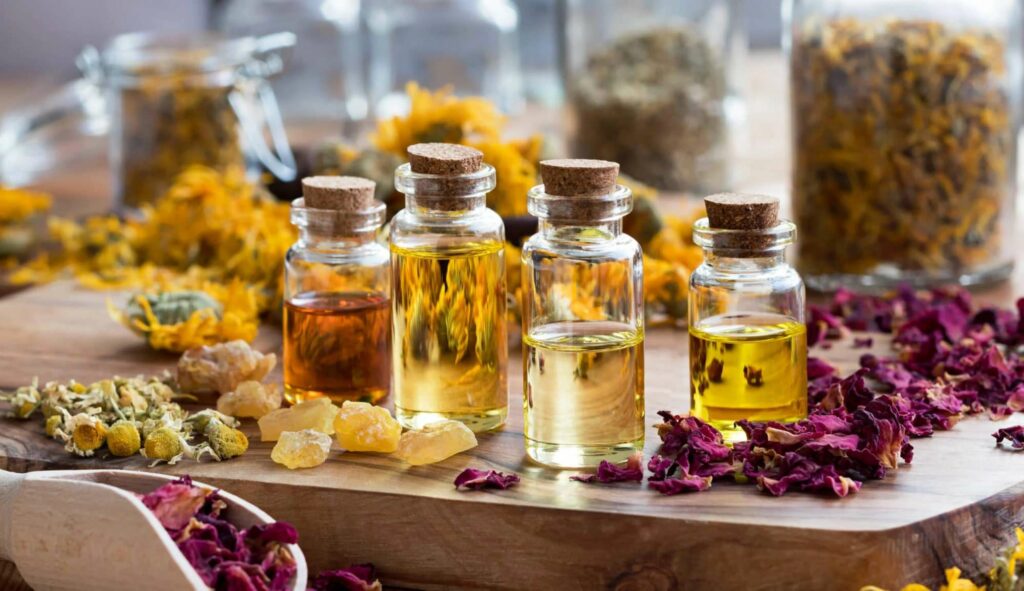
| Factor | Information |
| Effectivity | Moderate ●●○○○ |
| Speed | Slow to Moderate |
| Estimated Costs | Low to Moderate |
| Possible Risks | Low (use in moderation to avoid irritation) |
Create a solution of water and essential oils like peppermint or tea tree oil. Spray this mixture around your indoor plants to repel ants.
Regular Monitoring
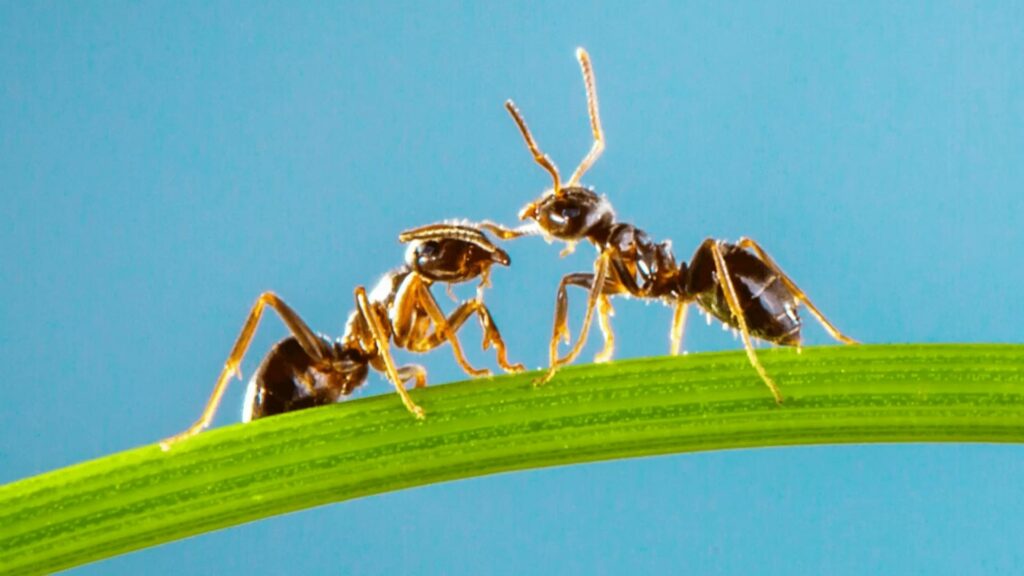
| Factor | Information |
| Effectivity | High ●●●●○ |
| Speed | Slow to Moderate |
| Estimated Costs | Low |
| Possible Risks | Low (early detection allows prompt intervention) |
Keep a close eye on your indoor plants for any signs of ant activity. Early detection allows for prompt intervention and prevents potential infestations.
Soil Inspection
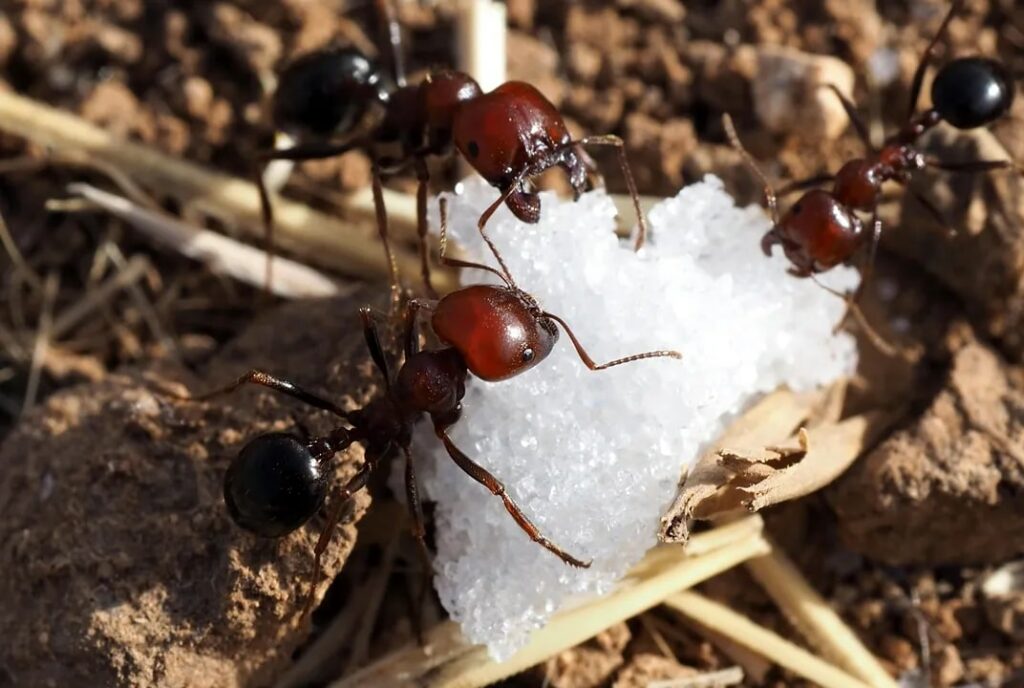
| Factor | Information |
| Effectivity | Moderate to High ●●●●○ |
| Speed | Slow to Moderate |
| Estimated Costs | Low to Moderate |
| Possible Risks | Low (avoid disrupting plant roots excessively) |
Periodically inspect the soil of your indoor plants for ant nests. If you notice ant activity, disturb the nest and relocate it, or replace the affected soil.
Best Ways to Prevent Ant Infestation
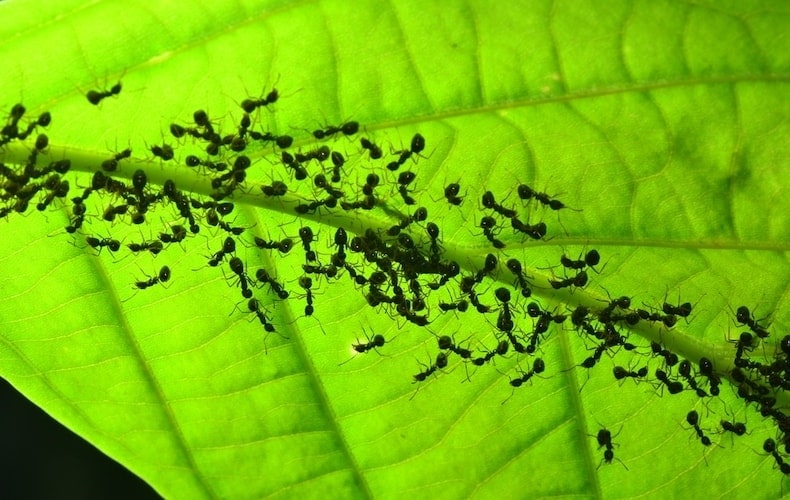
We’ve identified how to get rid of ants as well as how to protect indoor house plants from ants, so now we’re going to go about preventing ant infestations. We’ve made sure these methods are tried and tested for maximum effectiveness.
Maintain Cleanliness

Keep your spaces clean to avoid attracting ants. Regularly empty and tightly close trash bins to prevent any ant interest in garbage smells.
Trim branches touching your home to stop ants from using them to get inside.
Inspect and Clean Outdoor Furniture
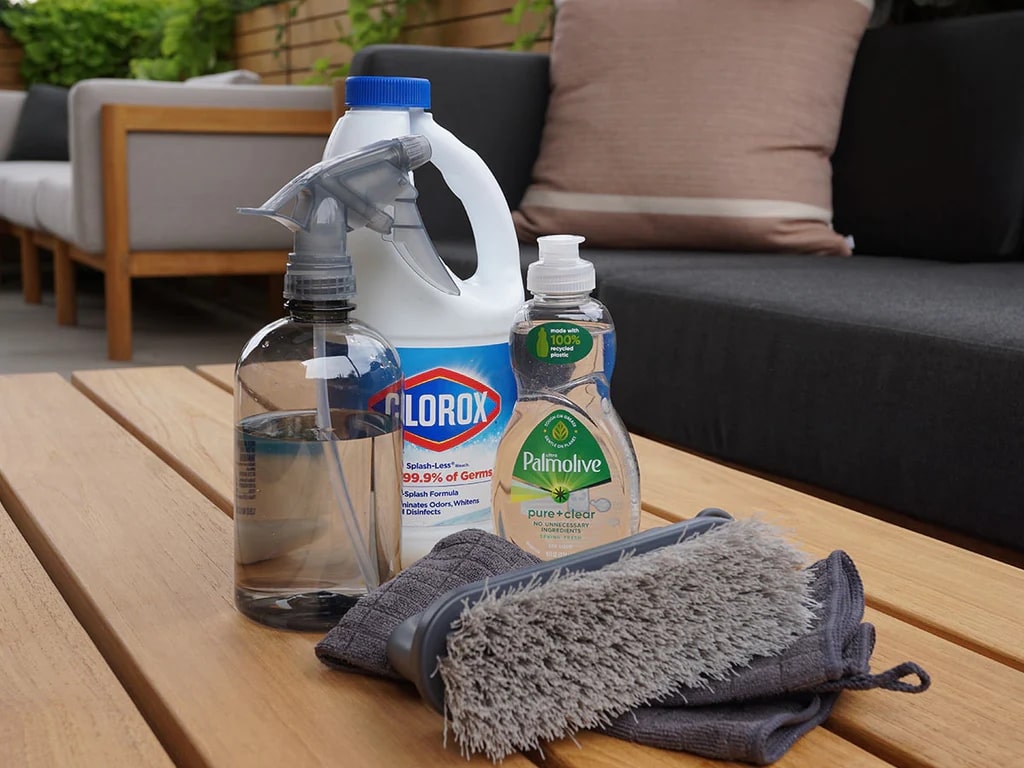
Check outdoor furniture for any ant activity, especially if it’s placed close to your home. Clean the furniture regularly to remove potential food sources.
Remove Water Sources
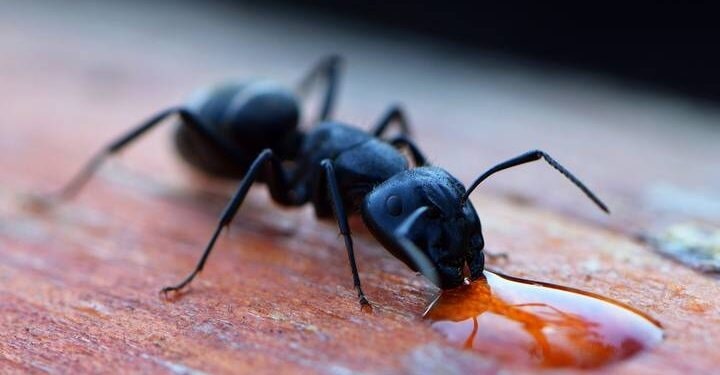
Fix leaks and remove standing water to make your home less appealing to ants. Keep food in airtight containers, clean up spills, and store pet food securely.
Seal pantry items to block ants from reaching your food supplies.
Create a Moat
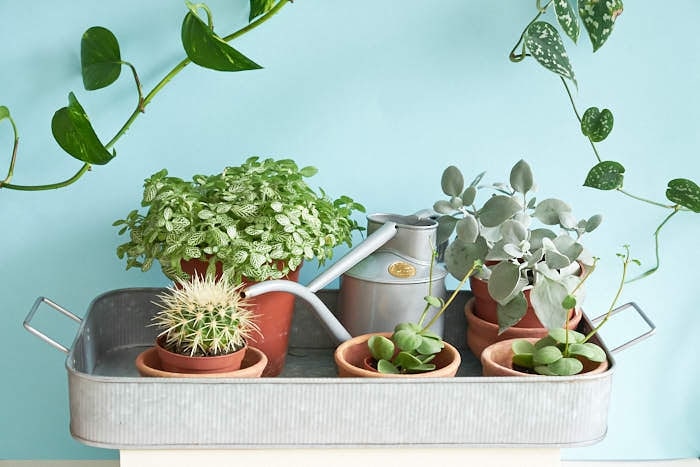
Place plant pots on plates filled with water to create a barrier that ants can’t cross. The water acts as a deterrent, keeping ants away from your plants.
Elevate Your Plants
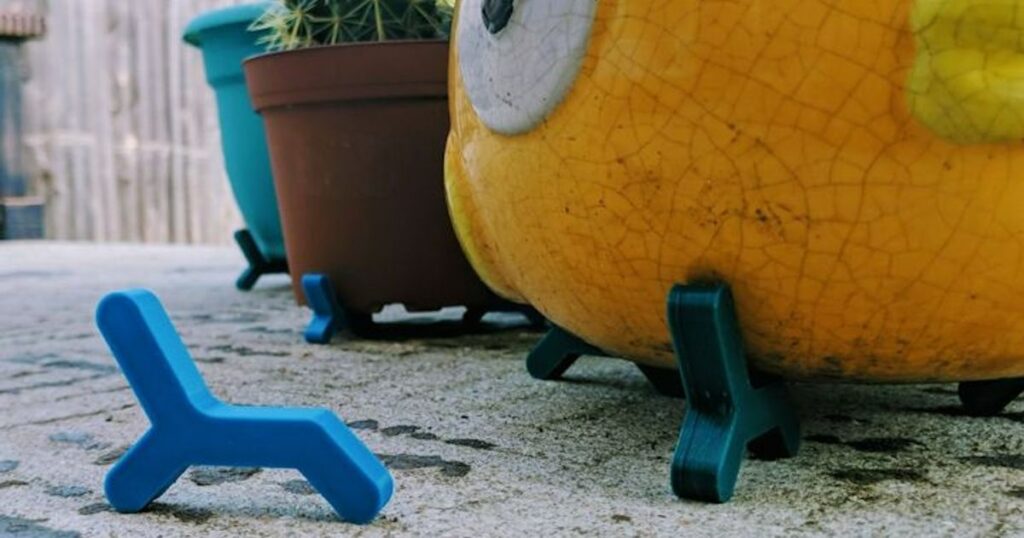
Raise plant pots using pot feet, risers, or stands. This will make it harder for ants to climb and reach your plants.
Although this method is somewhat effective, determined ants might still find a way. You can enhance its effectiveness by combining it with other preventive measures.
Use Less Organic Matter
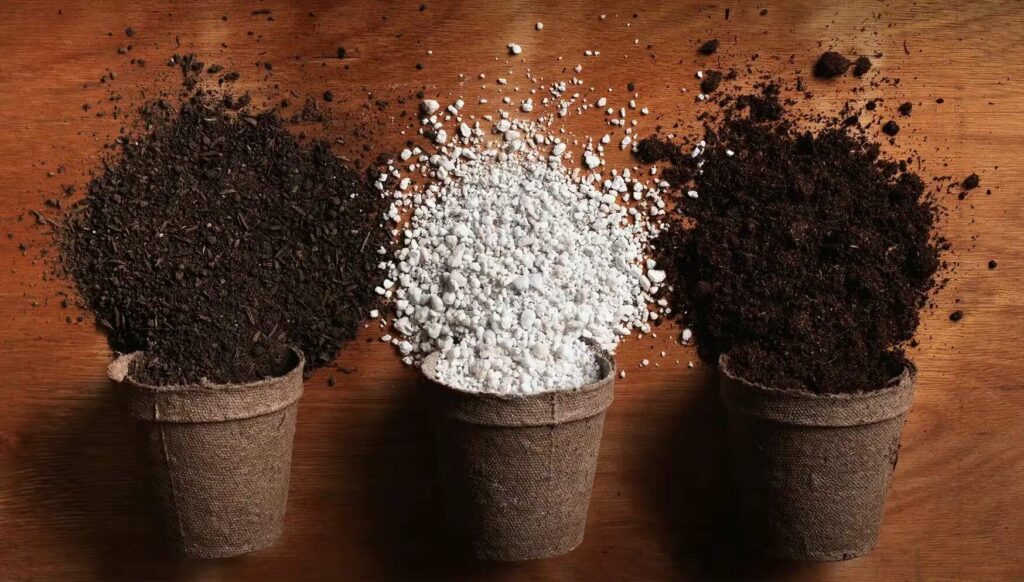
Reduce the amount of organic material in potting soil to make it less attractive to ants, as they are drawn to organic matter. However, maintain a balance for plant health, as some organic matter is necessary for proper growth.
Planter’s Tips
While we’ve mentioned this before in protecting indoor house plants, these methods work well in outdoor settings too:
- Strategically place ant bait stations around your property.
- Monitor areas prone to ant activity like kitchens and bathrooms.
- Apply food-grade diatomaceous earth in ant-travel areas.
- Identify and seal potential entry points.
- Use natural repellents like cinnamon, mint, citrus peels, or essential oils to create barriers and disrupt ant trails.
FAQs
Does baking soda kill ants in potted plants?
Baking soda does not kill ants in potted plants. Baking soda disrupts ant trails but it is not a potent insecticide, and its effectiveness in eliminating ant colonies is limited.
Does soapy water kill ants on plants?
Soapy water kills ants on plants. Mixing a few drops of mild dish soap with water and spraying it on ants disrupts their exoskeleton and suffocates them.
How do you keep ants away naturally?
To keep ants away naturally, use natural repellents such as cinnamon, mint, citrus peels, or essential oils. These scents disrupt ant trails and create barriers.
On top of these repellents, maintain a clean environment, seal entry points, and eliminate food and water sources to discourage ant infestation.
Is it normal to have ants in your plants?
It’s not normal to have ants in your plants. Their presence in your plants can signal underlying issues like aphids and other pests.





